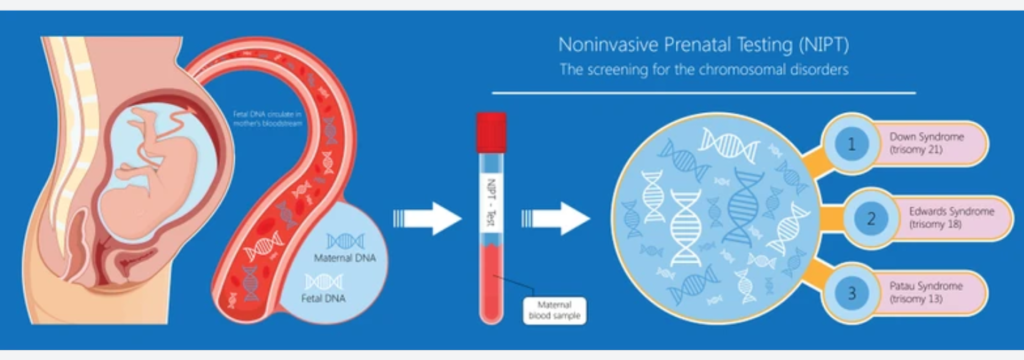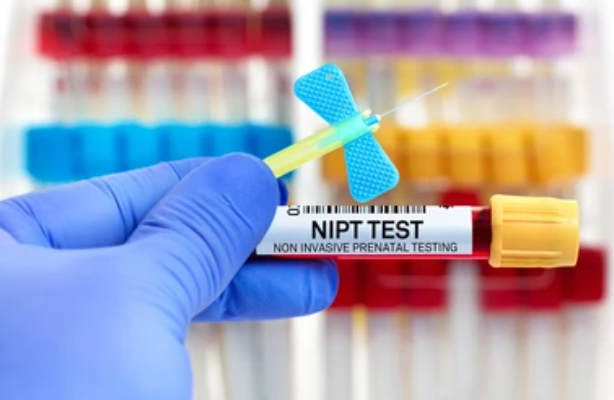INTRODUCTION
- Patau’s syndrome, known as Trisomy 13, unveils the intricate world of genetic anomalies and their impact on human development.
- Named after Dr. Klaus Patau, the syndrome involves an extra copy of chromosome 13, disrupting the usual genetic blueprint.
- This disruption triggers a series of events that shape the physical and intellectual aspects of affected individuals.
- Despite its rarity, Patau’s syndrome captures widespread attention due to its profound influence on affected lives.
- Beyond scientific terminology, Patau’s syndrome delves into the stories of individuals and families facing challenges with resilience.
- This introduction paves the way for a comprehensive exploration of causes, risk factors, prenatal screening, prevention strategies, and fostering inclusivity and support.
- Patau’s syndrome transcends genetics; it reflects life’s intricacies and the human spirit’s quest for understanding and empathy.
GENETIC CAUSES OF PATAU’S SYNDROME
- Chromosomal Abnormality: The core cause of Patau’s syndrome is the presence of three copies of chromosome 13, instead of the usual two, a condition known as trisomy. This genetic irregularity stems from errors that occur during cell division in the early stages of fetal development.
- Impact on Development: The additional genetic material disrupts normal developmental processes, resulting in the distinct features and health complexities associated with Patau’s syndrome. These abnormalities are responsible for the various challenges faced by individuals with the syndrome.
- Types of Patau’s Syndrome: There are three main types of Patau’s syndrome:
- Full Trisomy 13: About 95% of cases involve an extra copy of chromosome 13 in every cell of the body.
- Partial Trisomy 13: A portion of chromosome 13 is present in triplicate, leading to a range of symptoms depending on the specific segment affected.
- Mosaic Trisomy 13: Some cells have the normal chromosomal composition, while others carry the additional chromosome 13, resulting in a milder presentation of symptoms.
RISK FACTORS OF PATAU’S SYNDROME
- Maternal Age: The risk of having a baby with Patau’s syndrome increases with maternal age, particularly among women aged 35 and older. Advanced maternal age is associated with an increased likelihood of chromosomal abnormalities during conception.
- Genetic Predisposition: A family history of chromosomal anomalies raises the risk of Patau’s syndrome. This highlights the role of genetic factors in determining susceptibility to the disorder.
- Ethnicity: While Patau’s syndrome can affect individuals of all ethnic backgrounds, there are no significant variations in its prevalence across different ethnic groups. The risk remains relatively consistent regardless of ethnicity.
PRENATAL SCREENING AND DIAGNOSIS

- Importance of Early Detection: Prenatal screening and diagnosis play a vital role in identifying Patau’s syndrome during pregnancy. Early detection allows parents to make informed decisions about their child’s healthcare needs and plan for any necessary interventions and support.
- Prenatal Screening Methods:
- Non-Invasive Prenatal Testing (NIPT): NIPT is a blood test that analyzes fetal DNA present in the mother’s blood. It can detect the presence of the extra chromosome 13 with a high degree of accuracy.
- Ultrasound: Ultrasound scans can offer preliminary indications of potential chromosomal irregularities, such as structural abnormalities or growth delays.
- Definitive Diagnosis:
- Chorionic Villus Sampling (CVS): CVS involves collecting a small sample of placental tissue for genetic analysis. It can provide conclusive results about the presence of chromosomal abnormalities.
- Amniocentesis: In this procedure, a sample of the amniotic fluid surrounding the fetus is collected and analyzed for chromosomal anomalies, confirming the diagnosis.

PREVENTION STRATEGIES
- Genetic Counseling:
- Couples planning to conceive or in early pregnancy stages can benefit from genetic counseling. This process provides personalized information about the risk of having a child with Patau’s syndrome based on factors like age, family history, and prior pregnancies.
- Genetic counselors guide prospective parents in understanding their options and making informed choices.
- Awareness and Education:
- Raising awareness about the significance of early prenatal care and genetic testing is crucial. Educated parents are better equipped to make informed decisions and seek appropriate medical guidance.
- Research and Genetic Interventions:
- While complete prevention of Patau’s syndrome may not be feasible due to its genetic nature, ongoing research explores potential genetic interventions. Advances in gene editing techniques like CRISPR-Cas9 offer hope for correcting genetic abnormalities associated with the disorder.
EMBRACING INCLUSIVITY AND SUPPORT
- Equal Opportunities: Ensuring equal access to medical care, education, and opportunities for individuals with Patau’s syndrome is paramount. An inclusive society acknowledges the value of every individual, regardless of their abilities.
- Collaborative Support Networks:
- Collaboration among medical professionals, therapists, educators, and community support groups enhances the quality of life for individuals with Patau’s syndrome and their families.
- Comprehensive support networks address medical, educational, and emotional needs, contributing to overall well-being.
- Community Initiatives:
- Inclusive education programs that cater to diverse learning styles promote understanding and acceptance.
- Community initiatives dispel misconceptions and reduce stigma, fostering an environment of compassion and inclusivity.
CONCLUSION
In conclusion, Patau’s syndrome, caused by an extra copy of chromosome 13, presents intricate challenges that affect both physical and cognitive domains. Early detection, genetic counseling, and inclusive support networks are instrumental in addressing these challenges effectively. While complete prevention might remain a challenge, raising awareness, promoting inclusivity, and offering support for individuals with Patau’s syndrome contribute to a more compassionate and equitable society. This multifaceted approach ensures that every individual, regardless of their genetic makeup, receives the care, opportunities, and understanding they deserve.
Discover more from ZOOLOGYTALKS
Subscribe to get the latest posts sent to your email.


